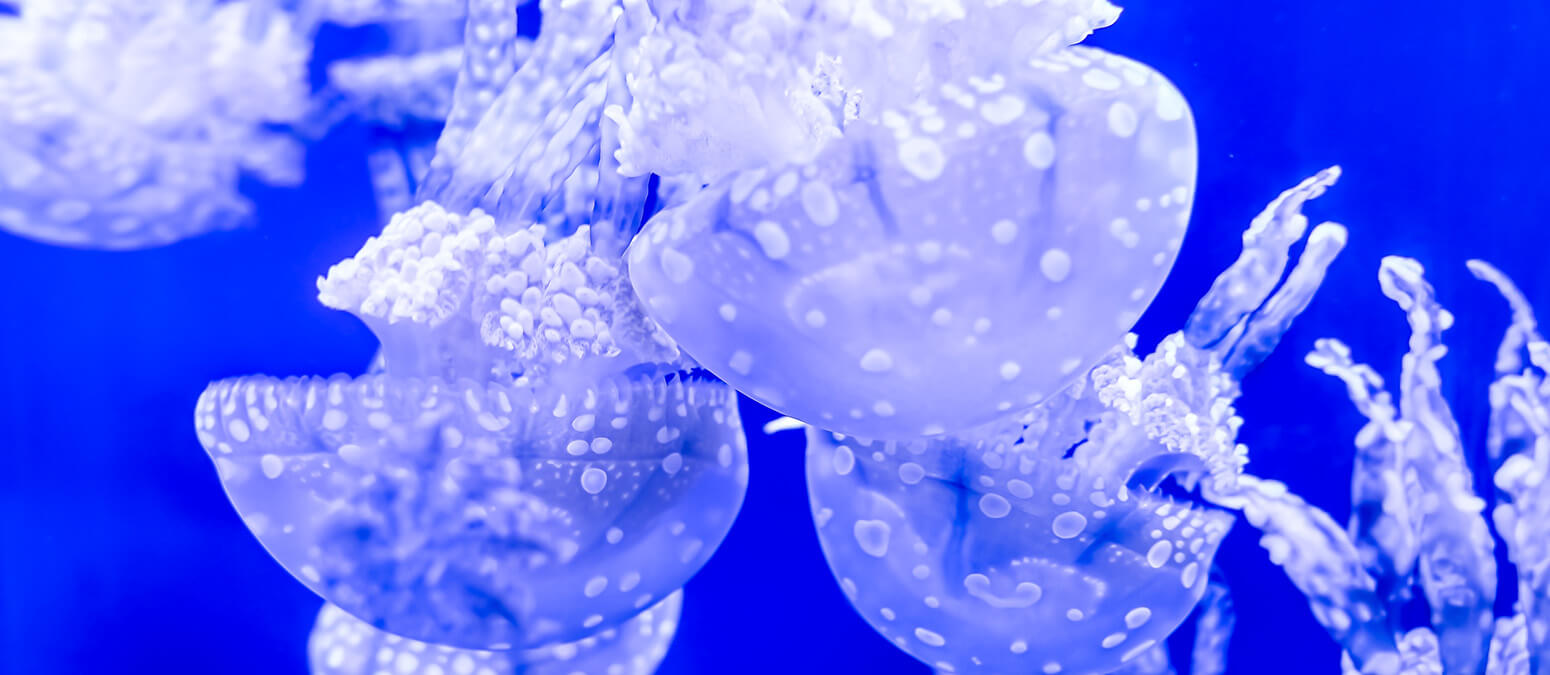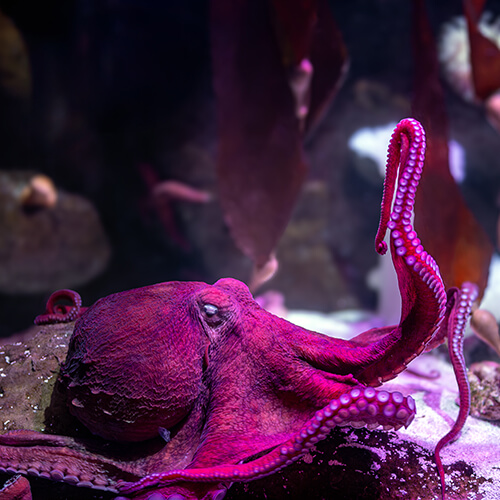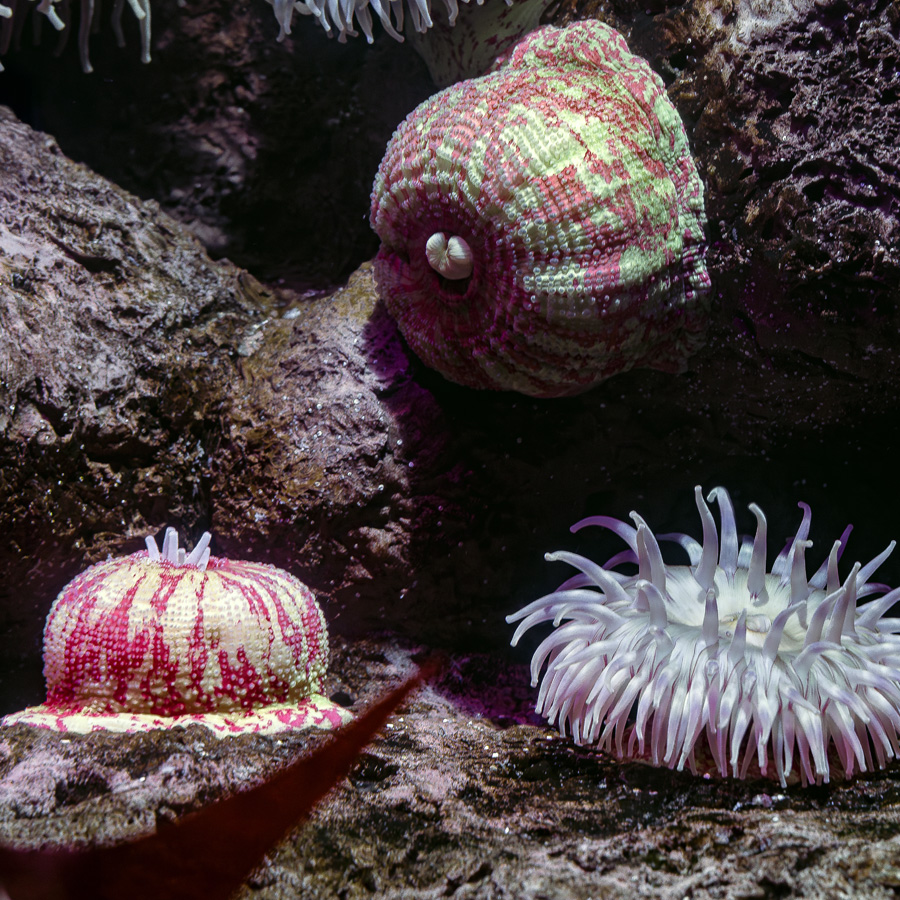
Animal Spotlight
Spotted Lagoon Jelly
Mastigias papua
Sun-Loving & Symbiotic
Also known as the Papua jelly, the spotted lagoon jelly relies on the sun and algae to get most of its food, thanks to a symbiotic relationship with zooxanthellae, special algae which can make their bodies appear greenish-brown.
During the day, spotted lagoon jellies travel upward, moving their bodies to absorb maximum sunlight for the zooxanthellae to photosynthesize. They have a very mild sting that can cause itching and burning. Some larger jellies have small fish that live inside their bell for protection from larger predators.
Meet the Neighbors
Come visit our spotted lagoon jellies in our Waves of Wonder gallery, which is shared with other fascinating species like the giant Pacific octopus and sea anemones.

Giant Pacific Octopus
Sporting 8 arms (not tentacles) these surprising cephalopods are smart enough to solve mazes, open jars, and recognize faces.

Sea Anemone
Discover this beautiful, albeit brainless, predator in a variety of shapes, colors, and sizes.
Ready to Visit?
Meet a color-shifting giant Pacific octopus, oscillating jellies, and mesmerizing sea anemones when you visit Waves of Wonder at The Florida Aquarium.
